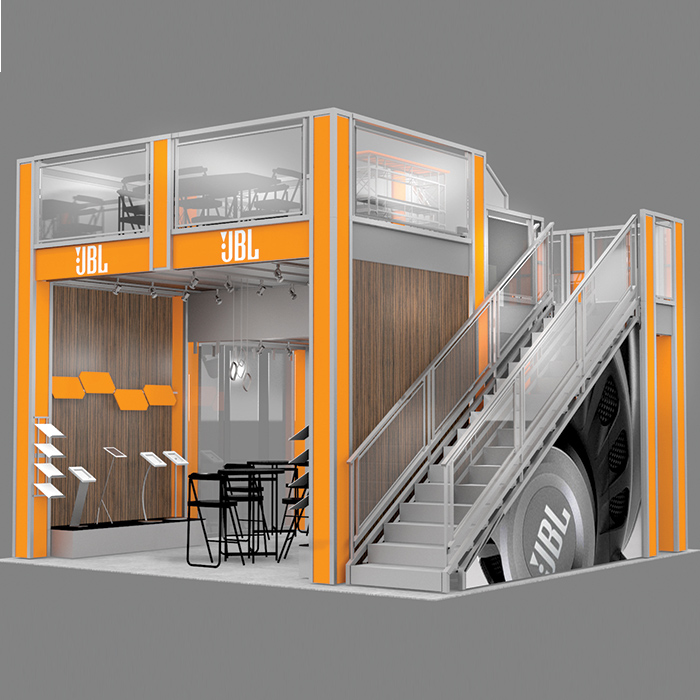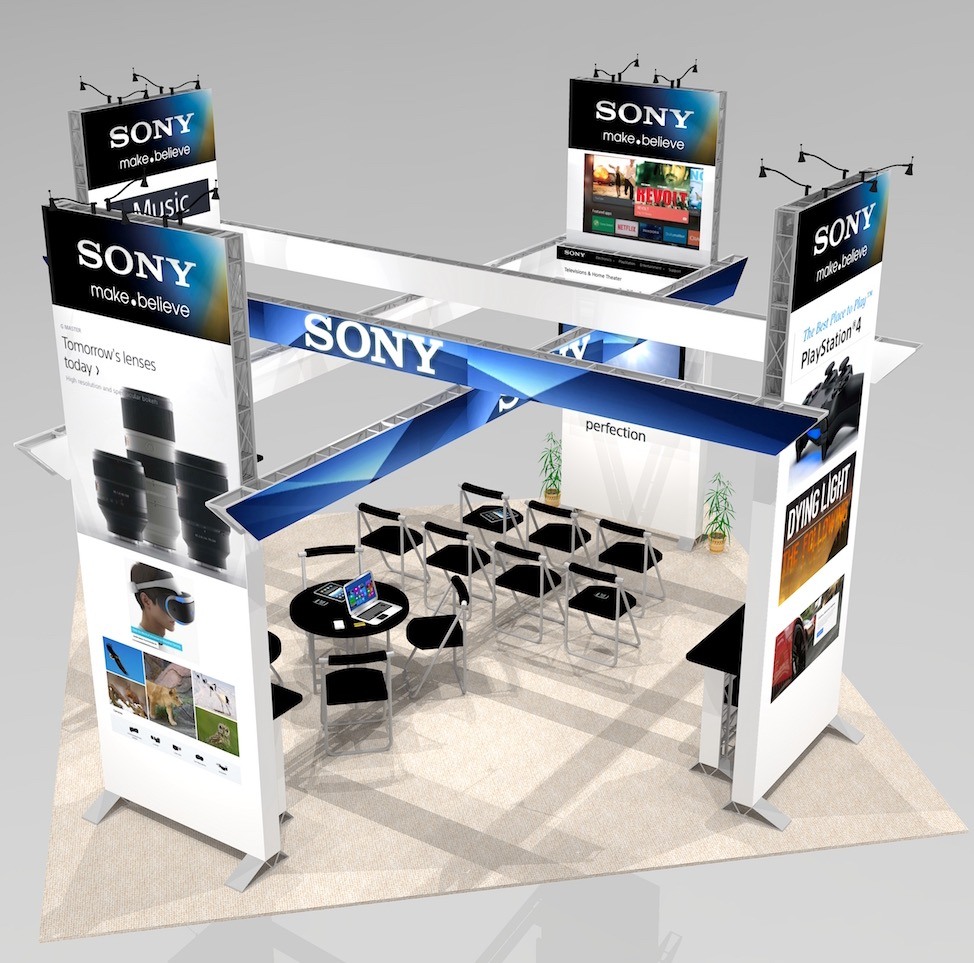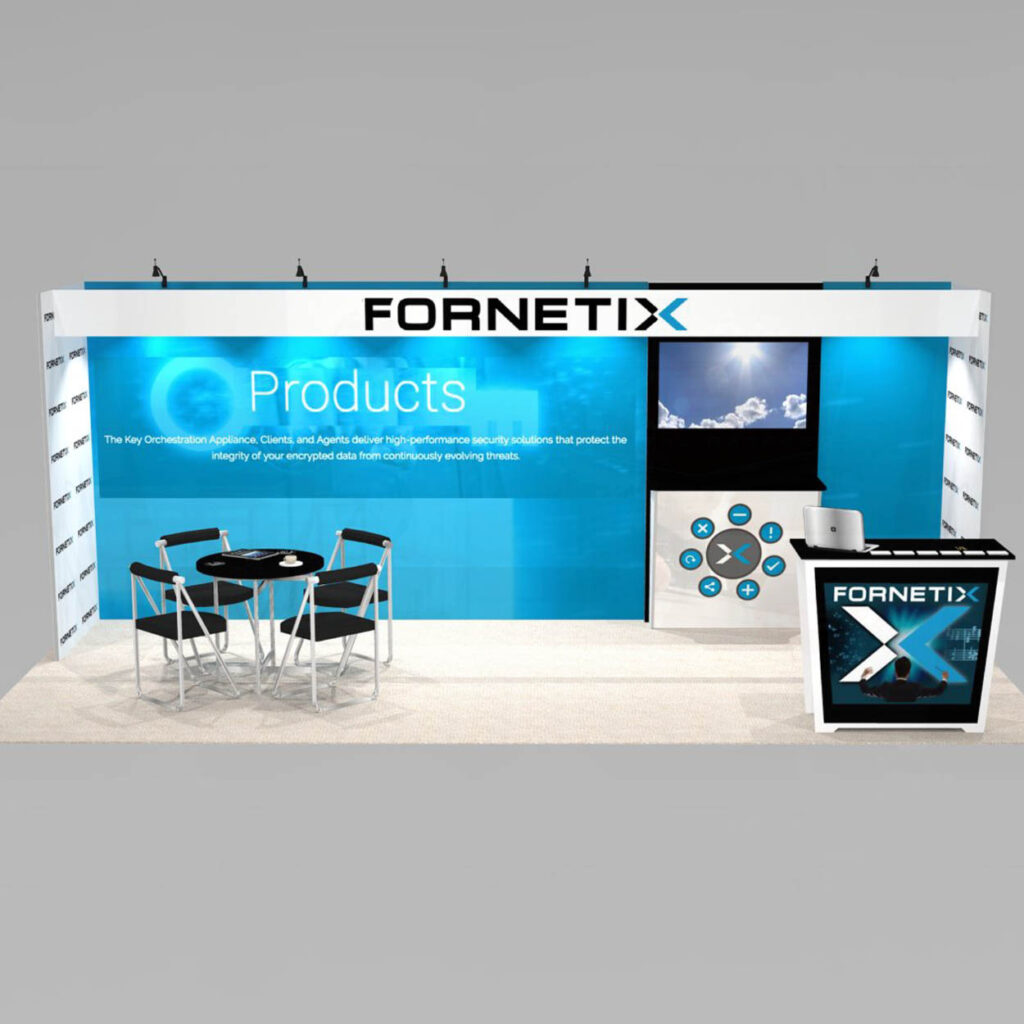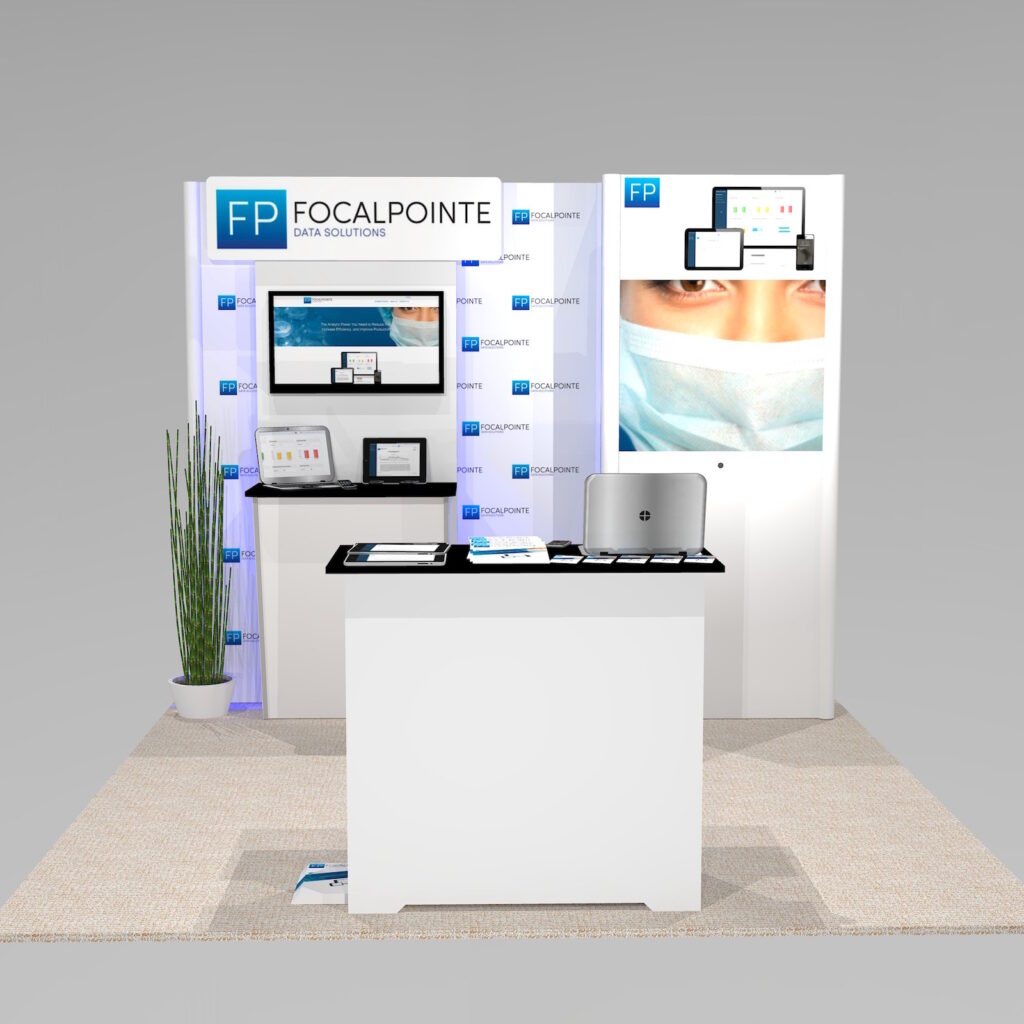Trade Show Displays For SEMA – Turnkey Rentals
View design ideas with links to exhibits organized by size below.
Published, itemized prices, CAD spec sheets provided for all designs
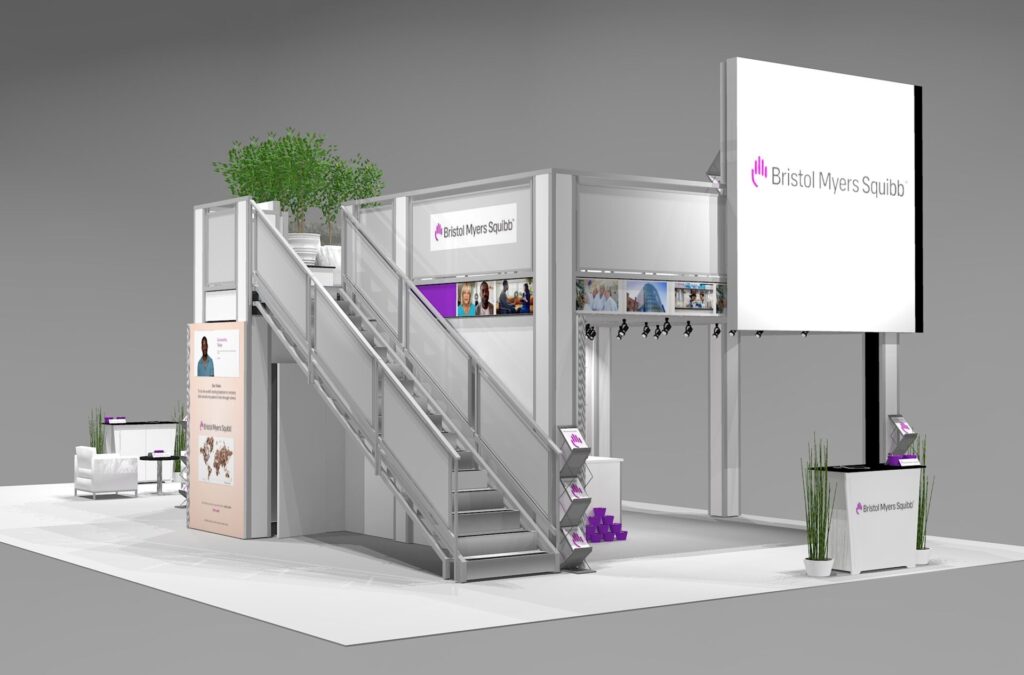
The SEMA Show is an annual trade show held by the Specialty Equipment Market Association (SEMA), which is an organization composed of manufacturers, distributors, retailers, publishing companies, auto restorers, street rod builders, restylers, car clubs, race teams, and more.
Key Features of Effective Exhibits at SEMA
Customization:
- Fully customized booths to reflect the brand’s identity and highlight automotive products like wheels, tires, performance parts, and custom builds.
- Use of backlit displays, high-resolution graphics, and interactive elements.
Engagement Features:
- Digital displays with product videos or live demos.
- VR/AR experiences to showcase product functionality.
- Shelving and display cases for parts or accessories.
Creative Design:
- Eye-catching themes such as garage-style booths or race-inspired setups.
- Large-format graphics to showcase cars or product installations.
Practical Functionality:
- Meeting areas for discussions with clients and distributors.
- Storage space for marketing materials and giveaways.
Double-Decker Exhibits:
- Popular for maximizing vertical space and creating VIP lounges or private meeting areas.
Renting a trade show exhibit at SEMA
For many companies, SEMA is the primary trade show for exhibitors. Because the show is so large, there is a higher level of competition for visibility on the show floor. Also, because SEMA is the premier automotive products show for the industry, it’s often the only show that some companies exhibit each year. Turnkey exhibit rentals make sense at SEMA!
Double deck exhibit rentals at SEMA

Double deck exhibits at SEMA are a unique and eye-catching way for companies to maximize their presence and visibility at the trade show. Here are some advantages of renting a double deck exhibit at SEMA:
Space Utilization: Double deck exhibits utilize both ground-level space and an upper deck, doubling the usable area within the booth footprint. This allows exhibitors to accommodate more products, demonstrations, meeting areas, and interactive displays.
Customization: These exhibits are highly customizable to reflect the brand’s image and message. Companies can design the upper deck as a private meeting space, VIP lounge, hospitality area, or additional product display area.
Visibility: Due to their height and design, double-decks stand out prominently on the show floor. They often feature large graphics, signage, and lighting that attract attendees from a distance and draw them into the booth space.
Meeting Spaces: The upper deck provides a secluded space for meetings, negotiations, and networking away from the hustle and bustle of the show floor. This enhances privacy and facilitates more focused interactions with clients and prospects.
Regulations and Logistics: Exhibitors planning double decks at SEMA must comply with specific regulations regarding height, structural integrity, safety, and accessibility. SEMA provides guidelines and resources to ensure that all exhibits meet industry standards and venue requirements.
Cost Considerations: Double decks typically involve higher costs than standard booth designs due to custom construction, additional structural support, and logistical considerations such as transportation, installation, and dismantling. However, turnkey rentals cap your cost for the exhibit, as well as transportation and labor before the show.
Brand Impact: Double deck exhibits’ impressive stature and design help reinforce brand presence and credibility, making a lasting impression on attendees and industry stakeholders. It’s often seen as a statement of a company’s commitment to innovation and leadership in the automotive aftermarket.
Overall, these exhibits at SEMA offer exhibitors a strategic advantage in space utilization, visibility, branding opportunities, and facilitating meaningful interactions with attendees. They are particularly favored by larger companies looking to impact and maximize their ROI at the show significantly.
Exhibiting at the SEMA Show offers companies in the automotive aftermarket industry a valuable
opportunity to showcase their products and innovations to a highly targeted audience.
Island Booth Trade Show Exhibits At SEMA
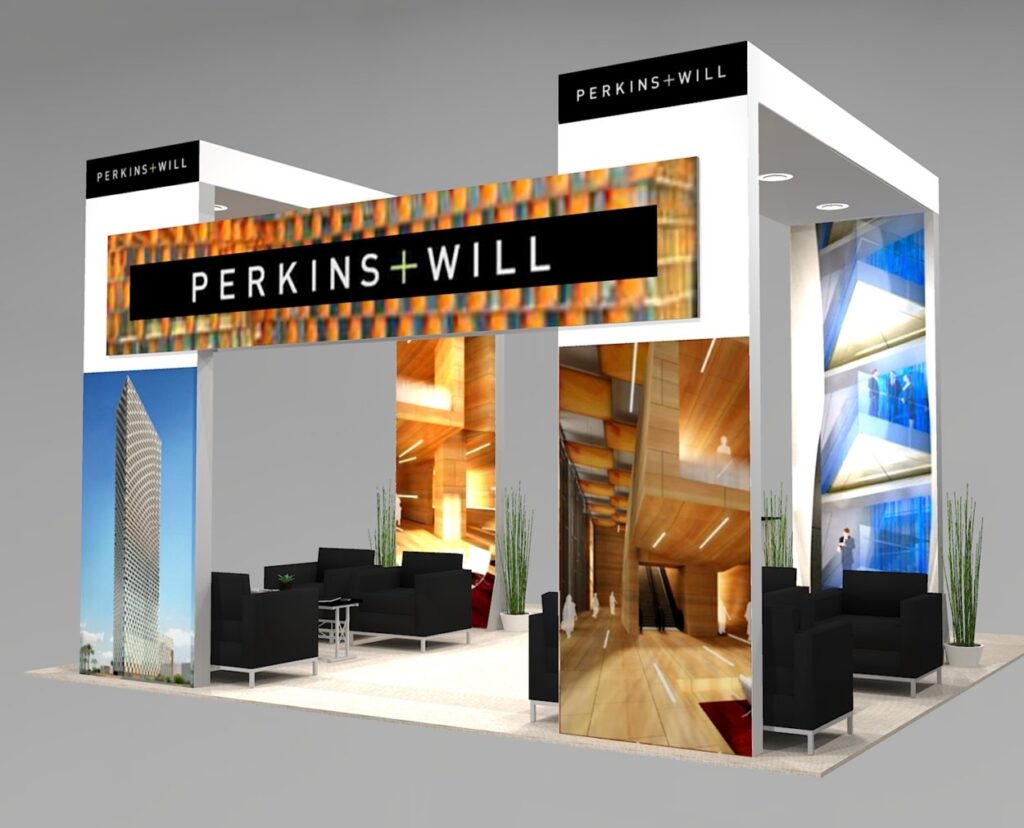
The Basics
Island exhibits are open on three or four sides, allowing attendees to approach the booth from multiple directions. Here are some key characteristics and considerations for island exhibits at SEMA:
Space and Visibility: Island exhibits occupy larger floor spaces than inline or corner booths. They are strategically located in high-traffic show floor areas, maximizing visibility and foot traffic.
Design and Layout: Island exhibits offer flexibility in design and layout. They often feature multiple entrances/exits, which can be designed with inviting and engaging elements to attract attendees from different directions.
Brand Presence: Due to their prominent location and spacious design, island exhibits provide ample opportunities for companies to showcase their brand, products, and services through large-scale graphics, interactive displays, and product demonstrations.
Traffic Flow: Effective traffic flow management is essential for island exhibits to ensure that attendees can easily navigate through the booth space without congestion. Clear signage, strategically placed product displays, and well-defined pathways help optimize attendee engagement.
Meeting Areas: Island exhibits can include designated areas for meetings, demonstrations, and client interactions. These spaces are often strategically placed to accommodate privacy and facilitate productive discussions away from the main aisles.
Logistical Considerations: Exhibitors planning island exhibits at SEMA need to consider logistical aspects such as booth setup, electrical and internet requirements, AV equipment, storage space, and booth dismantling after the show.
Regulations and Guidelines: SEMA provides specific guidelines and regulations regarding booth construction, height restrictions, safety measures, and fire codes for island exhibits. Exhibitors must adhere to these guidelines to ensure compliance and a smooth show experience.
Costs: Island exhibits typically cost more than inline or corner booths due to their larger size, custom design, and additional logistical requirements. Companies should budget accordingly for design, construction, transportation, and show services.
Overall, island trade show exhibits at SEMA offer companies a prime opportunity to stand out, engage with
attendees from all directions, and showcase their brand and products in a dynamic and impactful manner within
the automotive aftermarket industry.
Industry Categories At SEMA: Exhibitors fall into various categories such as:
Performance: Including engine components, exhaust systems, and performance tuning.
Accessories: Covering interior and exterior accessories, lighting, and custom styling.
Collision Repair & Refinish: Featuring tools, equipment, and vehicle repair and restoration
materials.
Tools & Equipment: Showcasing specialty tools, diagnostic equipment, and workshop essentials.
Wheels & Tires: Highlighting rims, tires, and related accessories.
Racing & Performance: Focused on motorsports equipment, safety gear, and race car
components.
Benefits of exhibiting at SEMA
Networking Opportunities: Exhibiting at SEMA provides unparalleled networking opportunities with industry professionals, including buyers, distributors, retailers, media, and potential business partners from around the globe.
Product Launches: Many exhibitors use SEMA as a launchpad for new products and innovations in the automotive aftermarket. This exposure helps generate buzz and interest among attendees and industry influencers.
Educational Seminars and Workshops: Exhibitors can participate in or host educational seminars and workshops to share expertise, demonstrate product applications, and engage with attendees on a deeper level.
Media Exposure: SEMA attracts extensive media coverage, offering exhibitors a chance to gain visibility through interviews, product reviews, and mentions in automotive publications and online media.
Business Opportunities: Beyond showcasing products, exhibitors use SEMA to cultivate business relationships, secure distribution agreements, and explore collaborative opportunities with other industry players.
Post-Show Follow-Up: Effective follow-up with leads and contacts made at SEMA is crucial. Exhibitors often leverage the show’s momentum to drive sales, expand market reach, and solidify their position in the automotive aftermarket industry.
Overall, exhibiting at SEMA is a strategic investment for companies looking to strengthen their brand presence, launch products, and capitalize on opportunities within the dynamic automotive aftermarket sector.
General information about the SEMA Show:
Purpose and Focus: The SEMA Show primarily focuses on the automotive aftermarket, including specialty equipment and accessories not typically included in factory configurations. This can range from performance parts to cosmetics and everything in between.
Location and Timing: The SEMA Show, a large annual event, takes place each year in Las Vegas, Nevada, usually during the first week of November. It’s held at the expansive Las Vegas Convention Center and attracts tens of thousands of attendees from around the world, underscoring its global importance.
Exhibitors: The show features thousands of exhibitors showcasing their latest products and innovations. These exhibitors include manufacturers of automotive parts, accessories, tools, and equipment and companies involved in customization, restoration, and tuning.
Attendees: SEMA is primarily a trade-only event, meaning it’s not open to the general public. Attendees include professionals from all automotive industry sectors, such as retailers, distributors, buyers, mechanics, engineers, designers, and media representatives. Activities and Events: In addition to the main exhibition halls, SEMA also features educational seminars, product demonstrations, networking opportunities, and special events like vehicle unveilings and competitions.
Impact: The SEMA Show is not just a significant event, it’s a powerhouse that influences trends and sets standards for aftermarket products and customization. It’s a platform for businesses to showcase their innovations and establish partnerships within the industry, demonstrating its immense influence and power.
Overall, the SEMA Show is a crucial event for anyone involved in the automotive aftermarket. It offers insights into the latest technologies, trends, and business opportunities in the field.
Why Rent A Custom Turnkey Trade Show Exhibit link
Overall, exhibiting at SEMA is a strategic investment for companies looking to strengthen their brand
presence, launch products, and capitalize on opportunities within the dynamic automotive aftermarket
sector. Renting an exhibit for the SEMA show avoids large initial purchase and recurring costs!

